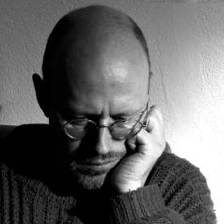Projects
Some projects I have been working on, am presently working on or will (probably) work on in the near future.
Decline?
In the coming winter (2014-2015) I shall be writing a small book in Icelandic on the decline myth in Icelandic historiography. Most Icelanders think that the middle part of our history (from the Late Middle Ages to the 19th century) was a time of incredible hardships and misery. This belief is highly questionable and is probably a political myth, originally serving the struggle for national independence. After independence was achieved the myth seems to have been co-opted by other political ideologies. Sögufélag will publish the book (in late 2015) and the work is supported by the Non-Fiction Writers' Fund.
Update (June 2016). I have also received support from the Non-Fiction Writers’ Fund [http://en.rannis.is/funding/research/non-fiction-writerss-fund/]. Publication is somewhat delayed but the book is practically finished and should appear later this year (2016).
Update (February 2020). The book turned out to be average sized and was published in 2018. It's called Hnignun, hvaða hnignun? Goðsögnin um niðurlægingartímabilið í sögu Íslands.
Adapting to Population Growth
Currently (September 2014), I am collaborating with Árni Daníel Júlíusson on an article on how evolutionary theory can illuminate human demographic history. Not in the expected Malthusian way but rather in line with the theories of Ester Boserup. We received a small grant from Hagþenkir: the Association of Non-fiction and Educational Writers in Iceland to write the article and it should be more or less finished this autumn.
Update (June 2016). The paper has been published in Cliodynamics: The Journal of Quantitative History and Cultural Evolution under the title: Adapting to population growth: The evolutionary alternative to Malthus.
The Peculiarities of Historians
I shall be giving a lecture at the 4th Icelandic History Congress (4. íslenska söguþingið) in early June 2012. In this lecture I discuss the peculiar aversion of most historians to general laws or principles. Why is history, in this respect, so different from the sciences or social sciences? Perhaps the answer lies in the evolution of story-telling in human societies. Stories may serve multiple purposes in human culture, including the making of group myths that are essential to group survival. The discipline of history probably emerged originally to perpetuate such myths – an important group function (e.g. for nations or states). However, myths are rarely true and they tell of unique events and people and are thus irreconcilable to general laws or principles. With greater demands being made to scientific accuracy and relevance in all disciplines, the historian faces a difficult dilemma. Does (s)he serve the group or the truth? The lecture should appear in the congress publication later this year (in Icelandic, unfortunately).
Update (March 2013). The article is ready and should appear next month if I'm not mistaken.
Update (July 2013). The article has been published on the Web. An English translation can be found on my academia.edu page.
Indo-European Expansions
The early spread of the Indo-European languages represents a prehistoric expansion of monumental proportions. The expansion cycle model, developed in my recent book, suggests how the Indo-European expansion might be explained and the evidence from archaeology, linguistics and genetics could be reconciled in a new hypothesis of the Indo-European homeland. A paper on this subject has been accepted by the Journal of Indo-European Studies and is scheduled to appear in the second issue of this year (2012).
Update (March 2013). The paper has been printed in Volume 40, Number 3 & 4, Fall/Winter 2012 of The Journal of Indo-European Studies under the name Indo-European Expansion Cycles. A pdf can be downloaded by clicking on the title. If you are interested in Indo-European studies please check out the journal homepage for its contents and its monograph series.
The More You Have, the More You Get (was The Evolution of Inequality)
A book-sized project I have been working on, on and off, for more than two decades and has metamorphosized several times. It began as a rather traditional study of the survival of the Icelandic aristocracy ca. 1100-1800 AD. In its present form it is more of a study of why most human societies tend to develop upper classes with the aristocracy in Iceland as a case study. I now concentrate on early Iceland (up to the end of the Commonwealth in 1262) and the social evolution from egalitarian beginnings to a well-defined class structure. As usual, I approach this matter from the standpoint of complexity and evolutionary theory. I am currently rewriting the manuscript for the third (and hopefully last) time.
I am currently (February 2020) also writing a couple of papers in Icelandic.
